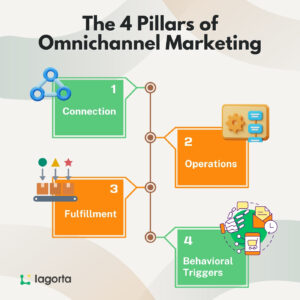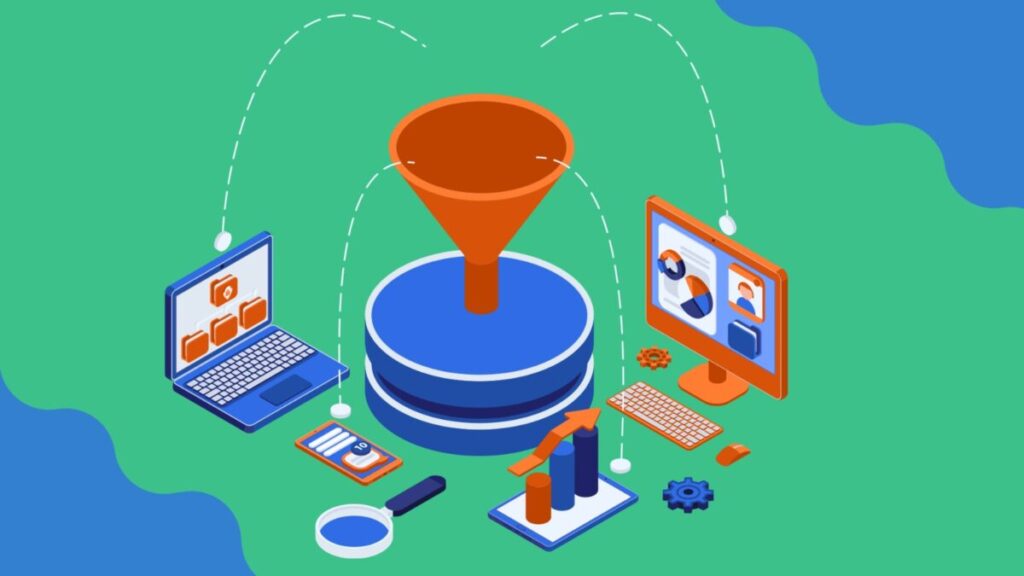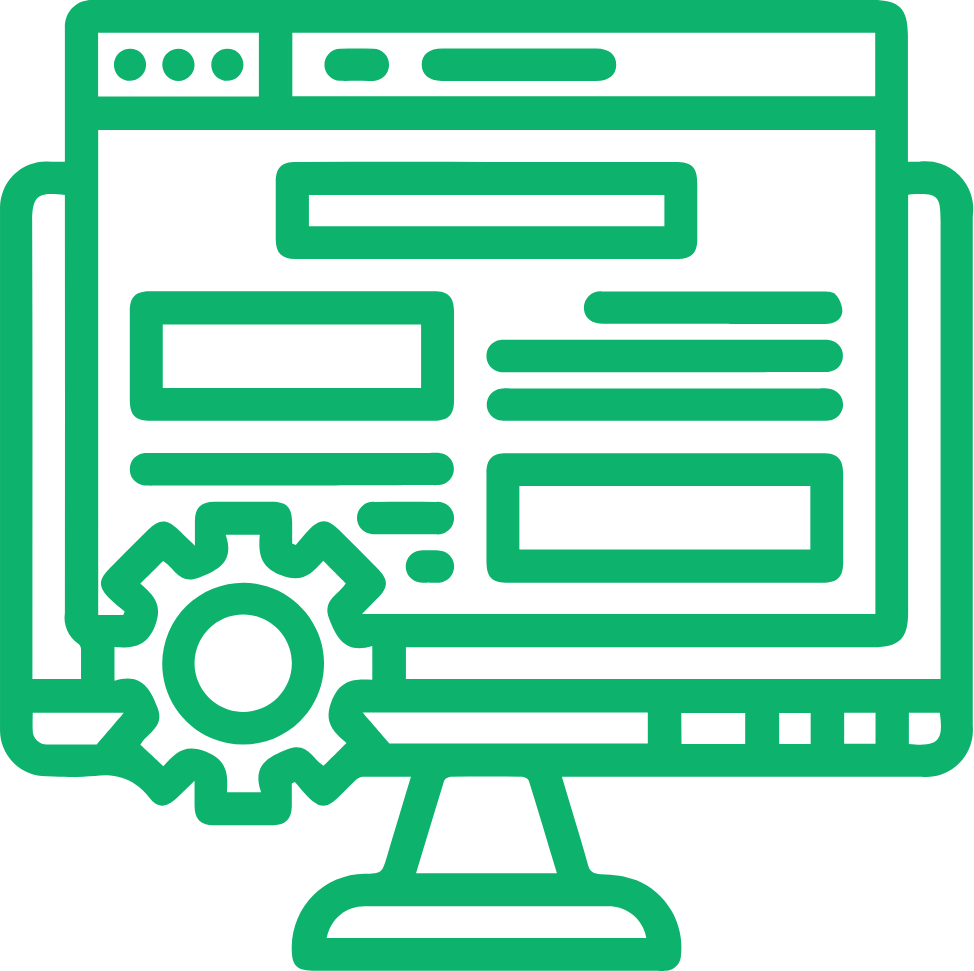Omnichannel marketing seamlessly integrates online and offline channels to provide customers with a unified brand experience. For ecommerce companies, implementing an effective omnichannel sales and marketing strategy has become essential to remaining competitive and driving revenue growth in today’s digitally-transformed world. This comprehensive article delves into the core components that form the pillars of any successful omnichannel approach to the modern retail landscape.
What is Omnichannel Marketing?
Omnichannel marketing focuses on synchronizing messaging, product assortments, promotions, pricing, customer data, and fulfillment across all channels and touchpoints. The goal is to present a consistent brand experience wherever customers choose to interact, whether in-store, online, mobile, or any combination. Omnichannel also implies integrating backend processes and technologies to enable this front-facing system.
Why It Matters for Ecommerce
Research indicates omnichannel customers spend more over time – often over 30% higher lifetime value than single-channel buyers. The advantages of implementing omnichannel marketing and sales support for ecommerce include:
Increased Customer Loyalty & Retention
Customers utilizing multiple integrated brand channels tend to buy more frequently over time and have much greater loyalty. Omnichannel shoppers complete nearly double the number of annual transactions, according to some reports. Retaining existing customers through stellar post-purchase and ongoing engagement also costs less than continually acquiring new ones.
Higher Average Order Values
Orders placed by customers purchasing across more than one channel generate significantly higher AOV. The ability to buy, fulfill, pick up, and return products through any channel outlet also boosts order sizes over time as convenience breeds confidence.
Brand Differentiation
In crowded retail markets, the frictionless experience omnichannel can provide a marked point of differentiation from competitors. Consumer studies show nearly 50% would switch brands for better omnichannel service. Particularly for demographics like millennials and Gen Z, flexibility and mobility are baseline expectations.
Revenue Growth & Scalability
An omnichannel approach provides ecommerce brands with a broader, more agile mix of sales channels beyond just ecommerce. Multi-channel selling enables tapping a wider target audience, showcasing products across contexts, and diversifying order sources. Combined with the lift from higher order values and loyalty, this strategy scales revenues.
The 4 Pillars of Omnichannel Marketing
Connection
Integrated Experience Across Channels
Fragmentation frustrates today’s time-pressed, expectation-laden consumers. Yet many brands still operate divisions between physical and online stores, marketing efforts, and customer service as internal silos. Omnichannel success hinges on integrating processes and technologies across channels to enable unified brand experiences externally.
True omnichannel connection means store associates can look up online purchasing history or shipping status for in-store customers. It means online customers can access localized inventory data to check store availability in real-time. Modern POS systems sync with ecommerce and CRM databases. Bridging channels requires revamping legacy mindsets and systems.
Mobile & Web Integration: Ecommerce brands must tightly interlink mobile app and website platforms through consistent interfaces, shared authentication, synchronized cart/wishlist functionality, and account management dashboard access across both avenues. Mobile now represents over half of all online traffic, so brands cannot afford a disjointed mobile presence.
Cross-Channel Loyalty Programs: Linking loyalty programs between online and offline channels also enhances engagement. Customers can accrue and redeem points however they interact with a brand. Tier status elevation and special offers apply universally. Elite members may qualify for perks like free expedited shipping or priority access to new arrival launches online based on in-store purchase history.
Utilizing Cross-Channel Data
As emphasized, breaking down data silos provides an immense opportunity to better understand and serve customers in a personalized manner not possible otherwise. CRM systems integrate datasets from web, mobile, email, social media, and brick-and-mortar purchase history to assemble comprehensive behavior profiles and monitor engagement levels across channels over time.
Journey Mapping: Data analyzers can map common customer journeys to identify touchpoints guiding shoppers towards conversions online and offline. What marketing assets most influence visitors to subscribe to email lists and then make an initial purchase? How long from the initial purchase do most customers return for another order – 30 days, 90 days? At what intervals should re-engagement emails be scheduled to nudge customers? Journey analytics informs optimal triggers.
Campaign Attribution: Multi-channel reporting also enables the proper weighting of marketing initiatives against their impact across online and offline sales. If an email promotion results in a spike in both email-based purchases AND increased in-store traffic, legacy metrics would only measure the online conversions directly but miss the major profit impact from additional foot traffic.
AI-Driven Recommendations: Artificial intelligence platforms ingest huge datasets on customer traits and behaviors to fuel product recommendations optimized for individual-level relevance. The accuracy of these suggestions – online or by store associates – depends greatly on the depth of unified cross-channel data from CRM systems. Limited data means recommendations default to best sellers versus personalized picks.
Flexibility in Channel Strategy
Even as integration builds seamless transitions behind the scenes, omnichannel also means maximizing flexibility for customers to engage however they choose. Customers expect freedom to research products online, then buy at a store, or just view items in-store, yet complete the purchase online from their sofa.
Fulfilling orders from any channel through optimal supply chain avenues enables this flexibility. Localized inventory visibility keeps pickup options realistic even as central warehouses handle shipping. As preferences and constraints shift, continually assessing channel metrics guides strategic resource allocation between online experience, stores, fulfillment, and marketing.
Operations
Omnichannel operations focus on synchronizing customer data, product information, inventory availability, order management, and coordination between channels to enable consistent brand experiences. This requires updating legacy systems, eliminating siloed workstreams, and enhancing visibility.
Reaching Audiences with Unified Messaging
Pre-internet brands relayed relatively consistent messaging across limited outlets like print ads, TV commercials, and retail stores. Today, fragmentation abounds across websites, apps, social media pages, online ads, and offline channels. Streamlining brand stories and promotions between disparate internal teams is vital.
Tactically, this involves maintaining documented guidelines, asset libraries, and approval protocols for visual identity, brand voice principles, messaging frameworks and content themes accessible companywide. Cross-functional collaboration must permeate silo walls dividing digital marketing, social teams, merchandisers, and store operations so all efforts ladder up to a unified strategy.
Understanding Effects Across Channels
Omnichannel also considers indirect repercussions across channels, like how a social media promo can increase instore sales or an email campaign impact online traffic. Analyzing metrics in aggregate is crucial for maximizing results. If online sales lift but pull product availability for nearby stores, overall outcomes may suffer without ensuring consistent inventory visibility and fulfillment capacity across channels.
Four Core Operations Pillars
These four pillars represent vital components for streamlining omnichannel operations:
Visibility – Inventory, order, and delivery status data stays fully synchronized across all channels in real-time so customers and store associates can promise accurate product availability and delivery estimates
Measurement – Dashboards and analytics track omnichannel KPIs across every channel, campaign, and fulfillment avenue to guide decisions through holistic performance views rather than channel vanity metrics
Personalization – Individualized interactions and messaging based on integrated customer data and intelligence help drive relevancy, conversions, and loyalty
Optimization – Continual testing, iteration, and refinement of channel strategies based on results data determines optimal resource allocation
Fulfillment
As the physical delivery method completes transactions, fulfillment represents a lynchpin of effective omnichannel execution. Supply chain flexibility, delivery speed, and options to buy online pickup in-store (BOPIS), and localized inventory availability all play key roles.
Adapting to Changing Consumer Behavior
In recent years, consumers accelerated shifts from predominantly shopping in physical stores to online channels. 2020 served as prime evidence when lockdowns suddenly forced an almost complete transition to ecommerce and BOPIS options practically overnight. Even as restrictions eased, surging cases caused fluctuations in behavior.
Integration of Fulfillment Channels
On the operational side, connecting inventory data, supply chain, and order management systems between physical and online channels streamlines delivery logistics.
If a distribution center stocks out of a popular item, orders could automatically get rerouted to fulfill from a nearby retail store’s available inventory instead. Or retail stores might shift certain items to online-only SKUs if heavy web demand regularly cleans out those products, enabling easier restocking to the primary warehouse.
Cross-docking inventory between locations and channels fills availability gaps and maximizes flexibility. Advanced algorithms can determine optimal sourcing for order fulfillment based on inventory levels, proximity to delivery addresses, and other factors.
Order Orchestration & Efficiency
The pinnacle of operational excellence involves orchestrating order sourcing and fulfillment through AI-based management systems. Beyond just technology integration, machine learning models can route orders to the most efficient supply channel.
Factors like delivery promise time, cost to serve, inventory health, or store traffic get assessed dynamically to optimize delivery logistics. This level of automated orchestration maximizes the margin per order. Efficiency at scale requires this degree of omnichannel coordination.
Behavioral Triggers
Strategically guiding customer behaviors towards key conversions and loyalty-building interactions along their journeys differentiates leading omnichannel programs. CRM automation and personalized real-time incentives motivate engagement across channels.
Multi-Channel Campaigns
Omnichannel marketers develop integrated sequences to prompt desired actions across online and offline avenues throughout each phase – whether acquisition, retention, or win-back outreach. Email signup popups on product pages, checkout discount promos for app downloads, QR codes in stores pointing to reviews, or post-purchase follow up surveys represent just some examples.
Marketing Automation Platforms
Sophisticated CRM automation platforms provide centralized management of triggered interactions across channels along step-by-step journeys. Tailored incentive messages can deploy via website overlays, mobile push notifications, SMS, email or printed retail receipts based on integrated customer data and attributes.
Building customer lifecycle engagement programs with phased nurturing streams enables personalized, automated dialogues that escalate in relevancy through more advanced segmentation and targeting parameters. The continuity CRM technology enables here fuels loyalty over time.
Complete Sequence Optimization
Tying these streams together to determine high-impact omnichannel trigger points and ideal cross-channel sequencing relies on overlaying behavioral analytics onto underlying CRM infrastructure. Only a holistic view of every online and offline touchpoint interaction can indicate where key moments of influence arise along the disjointed customer journey.
Predictive analytics then fuels optimization of outreach timing, offers, and channel strategies personalized for micro-segments based on these rich omnichannel insights – integrating digital body language with real-world engagement signals.
Unify Your Ecommerce Channels Today
Omnichannel retail represents the new normal where customers expect seamless brand experiences as they fluidly shift between online and offline channels, often multiple times, even within a single transaction. Streamlining connections, operations, fulfillment, and cross-channel behavioral triggers provides a framework for executing omnichannel marketing and sales strategies poised to escalate both customer lifetime value and revenue growth trajectories in the modern digital era.
Ready to take your marketing to the next level? Lagorta is here to help you create the perfect message for your targeted audience at the right time. With our advanced data analytics, AI applications, and real-time insights, we have the tools like CDP, multi-dimensional segmentation, customer lifecycle management, fast lane customer engagement, realtime marketing automation, omnichannel personalized experience, collaboration and self service to deliver personalized marketing campaigns that will drive results. Take advantage of the opportunity to establish the ultimate personalization models for your business. Contact Lagorta today and unlock your marketing potential!














